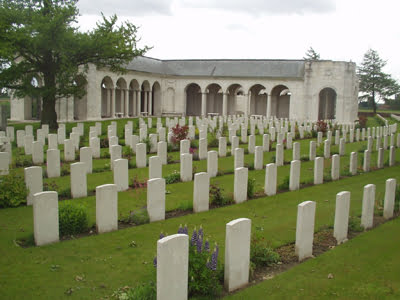Frank Thomas was born in Bagillt, Flintshire during 1884.
Little is known of his early life, but on 11 November 1905 he married his wife Abegail Lamb at The Register Office, Barnsley and they lived at 8 Powell’s Terrace, Bagillt. Frank was aged 27 years and employed as a Collier at Bettisfield Colliery, Bagillt. His wife Abegail was 26 and they had 5 children – Margaret Ann Thomas, b. 4 February 1906. Phoebe Thomas, b.15 November 1907. Frances Thomas, b. 22 July 1909, Renee Thomas, b. 6 March 1912 and Ann Thomas, b. 4 May 1914.
On 2 September 1914, Frank enlisted at Wrexham Barracks as a Private with the Royal Welsh Fusiliers. On enlistment he was described as 5’5″ tall, blue eyes, black hair, chest measurement 35″, range of expansion 3″. His physical development was described as good and according to the Recruitment Officer and Medical Officer he was fit for Military Service. His Attestation Certificate (British Army WW1 Service Records) can be viewed at ancestry.co.uk
He embarked for France on 11 November 1914.
Frank Thomas arrived in France with the Battalion on Monday 23rd November 1914 and was Killed in Action on Sunday 16th May 1915 during the Battle of Festubert, which took place south of Neuve Chapelle, Northern France. He was 31 years of age.(Private Hugh Howell Davies, Private Joseph Davies, Private James Jones and Lance Corporal William Jennings who are all remembered on the Rhyl War Memorial were also killed in action during the same battle that day).
An Extract from the County Herald dated 8 January 1915 – Private Frank Thomas 1st Battalion Royal Welsh Fusiliers, who has resided near Bagillt Railway Station has communicated with Mr Arthur Jones of Manchester House. Thomas states that he is in the trenches and desired to be remembered to all his friends in Bagillt.
The events of the day on which Frank Thomas died are as follows:-
The unit mustered 25 Officers and 806 men in the trenches that morning. Following a half-hour bombardment the unit attacked just after it ended at 3.16am, going over the top in successive order of 4 companies, 2 waves of men per company. Their aim (within the larger battle) was to take 2 lines of enemy trenches then hold a defensive position. It met heavy shell and machine-gun fire even as it left the trenches and tried to cross No Mans Land. They got beyond the two enemy lines but came under fire from their left, and part of the Battalion (A & part of B companies) was mixed up with the 2nd Scots Guards on that flank. The rear two companies (C & D) also suffered badly in crossing to the German lines. As some men pressed on further they were hit by ‘friendly’ shellfire and halted.
By 1pm contact was made with the Royal Warwicks Regiment on the right and the Queen’s Regiment came up in support. The Battalion found itself holding an exposed position facing an orchard, open to enemy sniping from front and rear. At 2pm the enemy began shelling the trench they were in, which offered little cover. Reinforcements from the 7th London Regiment came up and attacked the orchard covered by fire from the Royal Welsh Fusiliers, but had to fall back under machine-gun fire. The shelling meantime wrecked the trench and cut the Royal Welsh Fusiliers off from other units. Darkness was approaching as the Royal Welsh Fusiliers fell back to a line being held just in front of the former Second German Line, then were ordered to withdraw to trenches being held by The Queen’s, which they accomplished successfully.
The Royal Welsh Fusiliers claimed to have penetrated the enemy defences to a depth of 1200 yards. For this they paid a heavy price: Officers – 6 killed, 2 died of wounds, 9 wounded, 1 wounded and missing, 1 missing. Total 19 out of 25. Other Ranks – 118 killed, 271 wounded, 164 missing (many of whom would prove to be dead), 6 wounded and missing. Total 559 out of 806. Some 110 bodies were retrieved and buried in the old No Mans Land on 18 May, in addition to various officers brought in the previous evening.
He is also remembered on the North Wales Heroes Memorial Arch, Deiniol Road, Bangor, Gwynedd, North Wales.
There is a Flintshire Roll of Honour Card for Frank Thomas at the County Archives Office, Hawarden, which was completed on 4 August 1919 by his wife Abegail.
